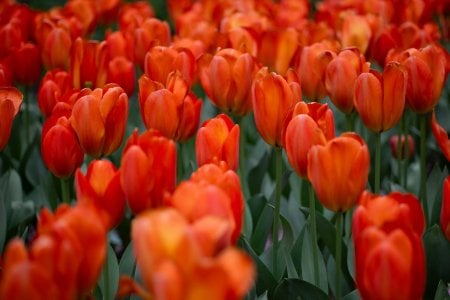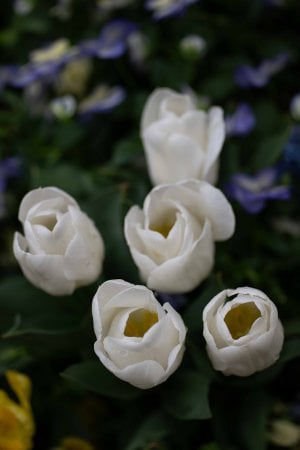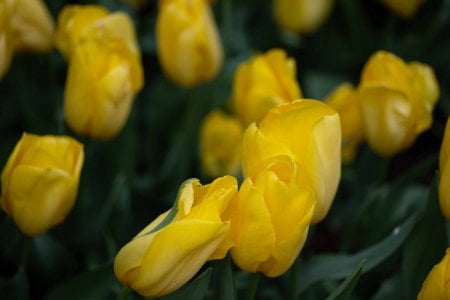Benjamin Marks
Mentor
Just when you thought it was safe to click, I bring you more boring pictures. But here's my excuse: when you want to see what a lens is going to do on a platform, there is no substitute for actually shooting it. So I wanted to look at a couple of Cosina/Voightlander lenses, including a 90/2.8 Apo Skopar that I purchased used from our head bartender. The thing arrived flawlessly clean -- honestly, I can't tell the difference between this thing and a new lens. The lens is in Nikon-F/AiS mount but is chipped so that the Z8's auto-aperture control works nicely with it. The resolution on this thing is pretty great, and I like the OOF areas -- crucial for me in a short tele that will be used for portraits.
Here's a snapshot of a clothesline with the Apo-Skopar wide open that will give you all a good sense of what happens as the zone of focus recedes from the plane of focus:
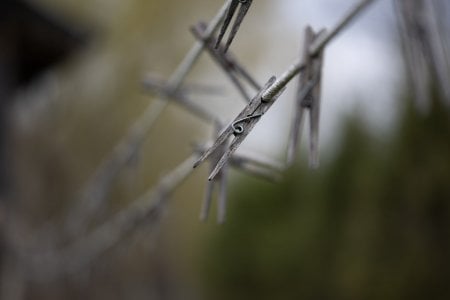
I like that transition. Here's a 100% crop, which held a little surprise for me (not aware when the original picture was taken):
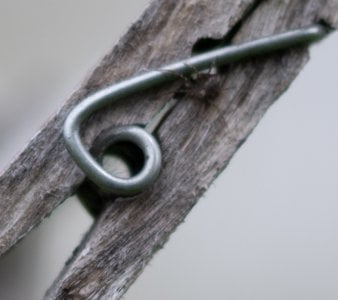
That's right. There is a tiny spider hitching a photo ride on this clothespin. The little arachnid was so small, I didn't know it was there until I did my 100% crop to look at the resolution on the wood grain. Side-effect of all that camera resolution at 46 MP.
Here's another example of the APO-Skopar's resolving power on this camera. Here's a head-on shot of the clothespins at f:5.6 to show the lens' treatment of distant OOF areas (about 40 yards to the back fence).
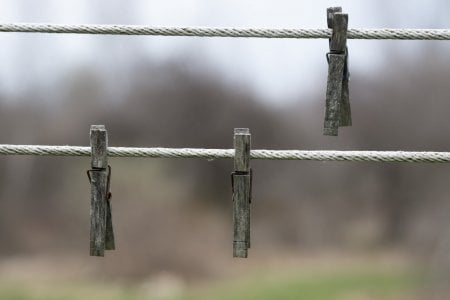
And here are spider webs (probably of the little guy in the first picture) at 100%, that are invisible in the "normal" size image:
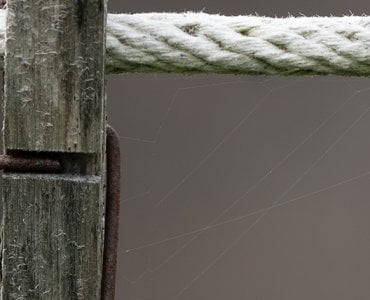
Remarkable, if you ask me.
Here's a snapshot of a clothesline with the Apo-Skopar wide open that will give you all a good sense of what happens as the zone of focus recedes from the plane of focus:

I like that transition. Here's a 100% crop, which held a little surprise for me (not aware when the original picture was taken):

That's right. There is a tiny spider hitching a photo ride on this clothespin. The little arachnid was so small, I didn't know it was there until I did my 100% crop to look at the resolution on the wood grain. Side-effect of all that camera resolution at 46 MP.
Here's another example of the APO-Skopar's resolving power on this camera. Here's a head-on shot of the clothespins at f:5.6 to show the lens' treatment of distant OOF areas (about 40 yards to the back fence).

And here are spider webs (probably of the little guy in the first picture) at 100%, that are invisible in the "normal" size image:

Remarkable, if you ask me.
Last edited:
Benjamin Marks
Mentor
Keeping with the last post and exploring the bench depth of what the C/V lenses can do: Here are some snaps with the C/V 50/3.5 Heliar LTM in brushed nickel, adapted in various ways to the Z8 (LTM to M adapter, clicked into a FotoDiox helical adapter). Set up looks mildly ridiculous (but fun to my eye).
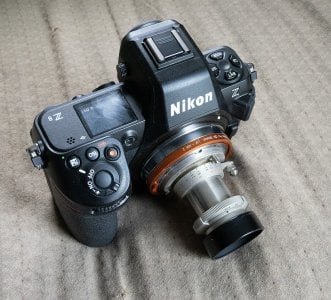
Kids, if you try this at home: DO NOT collapse that nickel Heliar while it is on the camera. I only eyeballed it, but broke out into a sweat when I did so. When this lens came out, Cameraquest quoted Herb Kepler saying something like "This wild but fascinating super classically styled camera comes in four delicious flavors and has what may be the best lens we have ever tested." Yikes! And yes, the thing screams quality in manufacture. But how does it play with the Nikon Z8?
Turns out, pretty nicely:
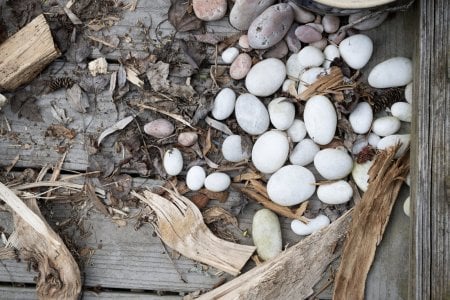
My only quibble is with the minimum focus distance, but the Fotodiox helical adapter takes care of that:
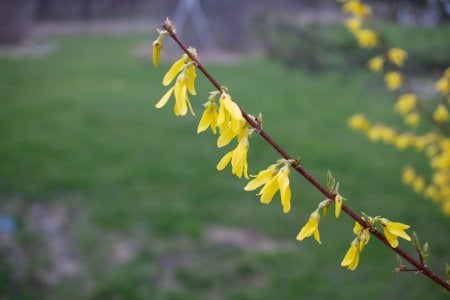
The obligatory 100% crop:
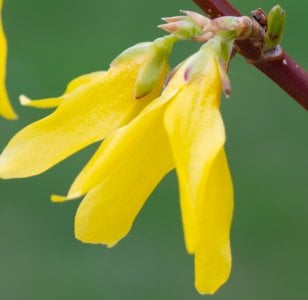
Now here's another surprise: look on the right side of the picture between the forsythia bloom and the stalk. See that gossamer strand? That's a bit of spiderweb that is thinner than a human hair. Not an important compositional element of this image, but YOIKS the resolving power of this thing is pretty amazing.
In the provisional analysis: I am REALLY going to enjoy using the Cosia/Voitlander lenses on this thing. Mr. Kobyashi has some really solid designs out there, that seem to prioritize image quality over pure speed. The Z8's noise handling properties pretty much mean that what seemed like a moderate-to-slow lens 10 years ago, can now be used in many, many natural light situations.

Kids, if you try this at home: DO NOT collapse that nickel Heliar while it is on the camera. I only eyeballed it, but broke out into a sweat when I did so. When this lens came out, Cameraquest quoted Herb Kepler saying something like "This wild but fascinating super classically styled camera comes in four delicious flavors and has what may be the best lens we have ever tested." Yikes! And yes, the thing screams quality in manufacture. But how does it play with the Nikon Z8?
Turns out, pretty nicely:

My only quibble is with the minimum focus distance, but the Fotodiox helical adapter takes care of that:

The obligatory 100% crop:

Now here's another surprise: look on the right side of the picture between the forsythia bloom and the stalk. See that gossamer strand? That's a bit of spiderweb that is thinner than a human hair. Not an important compositional element of this image, but YOIKS the resolving power of this thing is pretty amazing.
In the provisional analysis: I am REALLY going to enjoy using the Cosia/Voitlander lenses on this thing. Mr. Kobyashi has some really solid designs out there, that seem to prioritize image quality over pure speed. The Z8's noise handling properties pretty much mean that what seemed like a moderate-to-slow lens 10 years ago, can now be used in many, many natural light situations.
Benjamin Marks
Mentor
Finally: I'd be remiss if I didn't note that the 50/3.5 Heliar has a little light fall off at its widest aperture -- maybe a stop (?). Here's a boring picture of my grey deck so you can see what it does in the corners. Uncorrected:
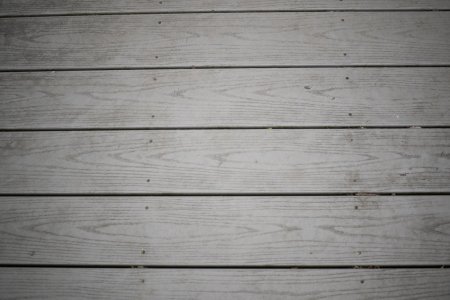
And corrected using CameraRAW's Voigtlander 50/3.5 Heliar profile and a skosh of vignetting correction:
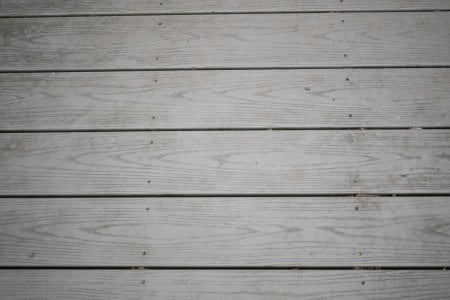
Hope you all can see the difference. It is pretty clear on my monitor.

And corrected using CameraRAW's Voigtlander 50/3.5 Heliar profile and a skosh of vignetting correction:

Hope you all can see the difference. It is pretty clear on my monitor.
Benjamin Marks
Mentor
I started a separate mini-thread about the Z8's IR response here:
Nikon Z8 IR Response (pix)
Here's one of the snaps with the Leica 35 Summaron/f:3.5 with a B&W 39mm 093 IR pass filter:
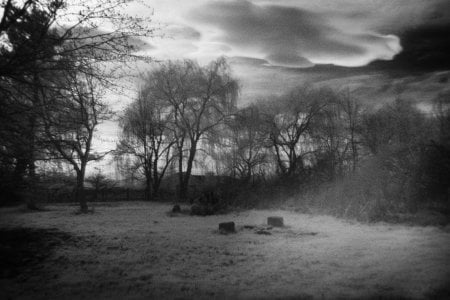
On the IR pix, it's always the sky that gets me. I think shooting with a tripod would be the way to go here. The camera's IBIS isn't up to 1-2 second exposures handheld. See the bright area on the lower right hand side of the picture? That's what I mean an uneven IR response. That's not an artifact of the Leica lens -- I took a baseline picture without the IR pass filter and the lens performs fine on the camera, with a stop or two of light fall-off in the corners.
Nikon Z8 IR Response (pix)
Here's one of the snaps with the Leica 35 Summaron/f:3.5 with a B&W 39mm 093 IR pass filter:

On the IR pix, it's always the sky that gets me. I think shooting with a tripod would be the way to go here. The camera's IBIS isn't up to 1-2 second exposures handheld. See the bright area on the lower right hand side of the picture? That's what I mean an uneven IR response. That's not an artifact of the Leica lens -- I took a baseline picture without the IR pass filter and the lens performs fine on the camera, with a stop or two of light fall-off in the corners.
Last edited:
Freakscene
Obscure member
It’s an IR hotspot. A lot of lenses with even visible light transmission have hotspots when used for IR or UV. Conversely, some quartz element lenses that are optimised for UV and IR like the Coastal Optics 60mm UV-VIS-IR macro can have hotspots with visible light.I started a separate mini-thread about the Z8's IR response here:
Nikon Z8 IR Response (pix)
Here's one of the snaps with the Leica 35 Summaron/f:3.5 with a B&W 39mm 093 IR pass filter:
View attachment 4836570
On the IR pix, it's always the sky that gets me. I think shooting with a tripod would be the way to go here. The camera's IBIS isn't up to 1-2 second exposures handheld. See the bright area on the lower right hand side of the picture? That's what I mean an uneven IR response. That's not an artifact of the Leica lens -- I took a baseline picture without the IR pass filter and the lens performs fine on the camera, with a stop or two of light fall-off in the corners.
Marty
Benjamin Marks
Mentor
That's interesting, Marty, and helpful. If I recall, the lens did not exhibit that behavior on the M8 or M9. I will have to do an M9 head-to-head comparison this weekend.
Benjamin Marks
Mentor
Share:


